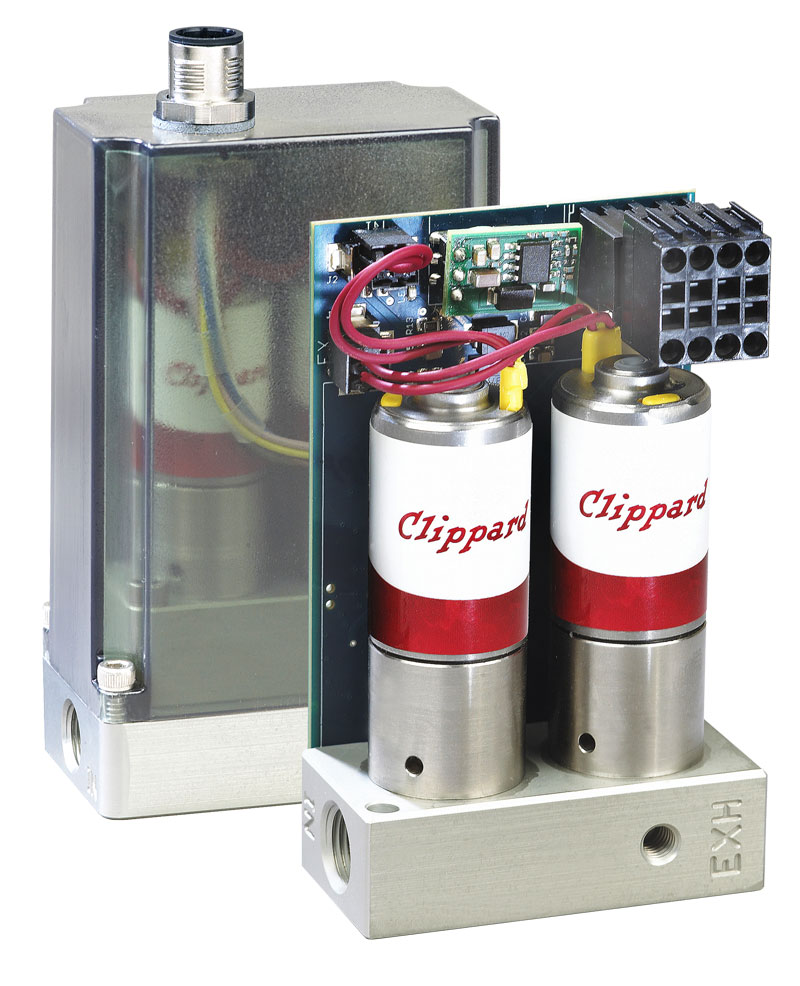Resolution in Proportional Control Applications
What is resolution, and why is it important? Doug Paynter, Clippard's Proportional Product Manager, explains all about it in this quick video—including why most proportional controllers don't publish resolution specifications.
Video filmed at Clippard in Cincinnati, Ohio
VIDEO TRANSCRIPT:
Hi everyone, I’m Doug Paynter, proportional product manager here at Clippard. Today I want to talk about resolution. What is it, and why is it important?
Resolution in Proportional Control Applications
Resolution in proportional control applications is better understood when discussing in the context of controllability. For sensors or input devices, resolution is the smallest measurement change of a unit that is detectable by the device. For example, 0-100 psig pressure transducers may detect pressure fluctuations of 0.1 psig within an electronic pressure controller. The sensor resolution would be 0.1% of full scale.
The problem is that this is only on the input side of the proportional controller. Few proportional controllers can claim to be high resolution devices, simply because of their mechanical means to achieve a satisfied proportional control - the valves.
A proportional pressure controller defines resolution as the smallest value of command change that affects actual pressure response. It bases resolution on the greater of both input and output of the device. So, if a proportional controller has a sensor of 0.1% of full-scale resolution, the unit may only be able to respond to 0.5% because the 100 psig proportional valves only have a resolution of 0.5% of full scale.
The Cordis Proportional Microcontroller
The Cordis proportional microcontroller employs Clippard proportional valves and proprietary algorithms to achieve ≤5 mV resolution. For example, if I take a Cordis proportional pressure regulator and put the calibration of 0-10 volts = 0-100 psig, with that type of calibration I would be able to see - and change - pressures down to 0.05 psig, throughout the whole entire range. That is phenomenal resolution.
Why Most Proportional Controllers Don't Publish Resolution Specifications
The reason most proportional controllers in today’s market do not publish resolution specifications is because their internal proportional valves only achieve steps of 25 mV, and most digital valves—on/off valves—step in the 50 mV, or even worse, resolution. Clippard’s Cordis series proportional control products offer a control ratio of 200:1, signifying 200 steps of resolution for every 1 volt increment.
Understanding How Resolution is Defined
Understanding how resolution is defined in proportional control applications is one of many specifications needed to be considered when choosing the right product. While some applications do not require the high resolution proportional control, no process is going to suffer for better resolution. We do find in a lot of cases in these type of applications, high resolution control yields a significantly better result in the customer’s application.
Be sure to subscribe to our YouTube Channel. I am Doug Paynter, Proportional Product Manager here at Clippard and an all around good guy. Thank you very much for your time.
|
|
||||
Cordis Series Electronic Pressure Controls |
||||
Related Content
- White Paper: Resolution in Proportional Control





